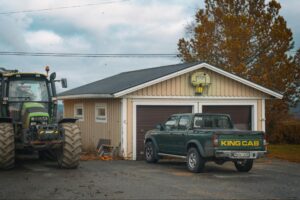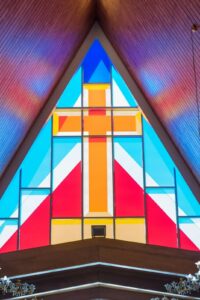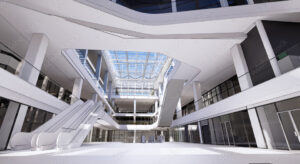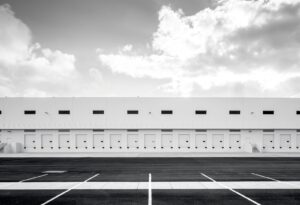Imagine a home that combines the simplicity of a shed with the comfort and functionality of traditional living—welcome to the world of shomes! This innovative housing concept is rapidly gaining traction as a practical, cost-effective, and sustainable solution for modern living. As housing markets shift, shomes stand out by offering creative and adaptable living spaces that feature straightforward construction along with modern amenities.
With the global prefabricated housing market projected to soar to $180.6 billion by 2027.
Sunshine City Solar, the demand for flexible housing options like shomes is on the rise. In this article, we’ll explore the numerous benefits of shomes and how they can transform your lifestyle, making them a compelling choice for those seeking both functionality and sustainability. Dive in to discover how this exciting trend can redefine your living experience!
Table of contents
Understanding the Concept of a Shome
At its core, a shome serves two main functions: providing storage like a shed and offering livable comfort like a home. Many homeowners are drawn to the versatility of shomes, which serve a variety of purposes, from tool storage and housing RVs to providing dedicated spaces for hobbies. The National Association of Home Builders reports that about 1 in 10 new homes are accessory or multifunctional units showing a trend toward flexible living solutions.
The Origin and History of Shomes
Shomes, short for “shed homes,” originated in the agricultural sector. Farmers needed cheap, multi-use spaces for storage and living. Over time, the concept grew beyond farms, finding popularity in rural and suburban areas.
Today, shomes are a modern, sustainable living solution. They blend traditional home design with eco-friendly principles. They use energy-efficient materials, like insulated metal panels. The U.S. Department of Energy says that these materials cut energy costs by up to 30%, providing homeowners with a balance of affordability and sustainability. As interest in sustainable housing rises, analysts expect the prefabricated housing market to reach $180.6 billion by 2027.
Tied to the tiny house movement, shomes emphasize efficiency and minimizing environmental impact. However, unlike tiny houses, which are often mobile, shomes offer a more permanent solution with a larger footprint. This lets homeowners customize their space. It also embraces downsizing and eco-friendly living. Shomes are a cheap, simple, and green housing option. They suit those who want to reduce costs and live sustainably while maintaining comfort.
The Structure and Design of a Shome
Designers create shomes with a blend of functionality and modern aesthetics, making them both durable and adaptable. Also strong, their steel-framed structures resist diverse climates making them a reliable housing choice in rural and suburban areas. Their construction often includes energy-efficient materials. These are like insulated metal panels and eco-friendly roofing, which help reduce long-term energy costs. Also, the steel framing adds to the strength ensuring that shomes can withstand harsh weather.
While customization is a key aspect of shome design. Choosing from many architectural styles from a sleek, modern look or a traditional, rustic one, the interior layout options are versatile. You can choose from open floor plans to more segmented designs that offer added privacy. makes shomes a practical and stylish option for modern living.
Key Features of a Shome
A common hallmark of shomes is their large, open interiors. They have high ceilings, which makes the space feel airy and expansive. They usually have many windows and skylights. They let in natural light and provide views of the landscape.
Inside, shomes have modern kitchens, bathrooms, and bedrooms. They are functional and space-efficient. For those interested in tech, shomes can easily add smart features. These include automated lighting, climate control, and security systems. Eco-friendly appliances, water-saving fixtures, and even solar panels can further enhance sustainability, creating a home that embodies both modernity and efficiency.
The Architectural Elements of a Shome
Shomes come in many styles. They range from sleek, modern designs to rustic, traditional looks. Homeowners can customize their shome’s exterior with wood, metal, or a mix of both. This creates a look that reflects their taste and suits the environment. This adaptability boosts its look and connects the home to nature.
Today, many homes prioritize sustainability. While using energy-efficient tech, like solar panels, rainwater harvesting systems, and green roofs, they reduce environmental harm and cut utility costs. So, they make eco-friendly living more accessible. These practices let homeowners live sustainably. They also help preserve the planet’s resources.
Did you know? Shomes can be designed with unique acoustic treatments, making them ideal for homeowners who want a quiet living space or even a dedicated music studio. By adding soundproofing materials to the metal structure, shomes can balance open space with reduced noise levels—perfect for work-from-home setups or hobby spaces!
The Functionality and Use of Shomes
Shomes, a blend of “shed” and “home,” are popular. They are multifunctional and adaptable. They offer a new take on modern and sustainable living. These compact, functional structures let homeowners customize their spaces for various needs. For example, some use their shome as a cozy backyard retreat. Others turn it into a distraction-free workspace. This flexibility makes shomes an attractive option for anyone looking to create a personalized living environment.
The versatility of shomes extends to their common uses. Thus serving as extra living spaces for guests or aging parents serving as home offices, studios, hobby areas, or even pool houses. A big advantage of shomes is that they are easily converted for different uses without major renovations. Shomes are a practical solution for today’s diverse lifestyles. They balance work and leisure. So, they are ideal for relaxation or as a workspace.
The Benefits of Living in a Shome
A shome offers many benefits. They appeal to homeowners seeking comfort and practicality. These versatile spaces provide storage for gear and belongings. They also maintain a cozy living area. Shomes are appealing because they are affordable. They need less maintenance and have lower utility costs than traditional homes. So, they are a smart financial choice. According to the U.S. Department of Energy homeowners typically waste around $400 each year due to energy inefficiencies. This is due to things like air leaks and outdated systems, making the cost-saving potential of shomes even more significant as they promote energy-efficient living.
Moreover, shomes are designed with sustainability in mind. They often incorporate energy-efficient appliances, insulation, and materials, allowing homeowners to minimize their environmental footprint. The smaller size of a shome not only reduces resource consumption but also encourages a more eco-conscious lifestyle. For those looking to downsize, simplify their living arrangements, or create adaptable spaces that evolve with their needs, shomes offer a perfect blend of flexibility, cost-effectiveness, and sustainability.
The Process of Building a Shome
In other words, constructing a shome is an exciting journey that involves essential steps to ensure a successful outcome. It all begins with a careful assessment of the chosen location, determining the best positioning for the structure. Homeowners consider sunlight, wind, and the landscape. These factors improve the home’s energy efficiency and beauty. Proper planning at this stage is crucial for creating a comfortable and sustainable living environment.
Finally, once the site is prepared, skilled craftsmanship comes into play during construction. From laying the foundation to installing utilities, attention to detail is key to ensuring durability and functionality. Emphasizing energy-efficient materials and techniques can further reduce environmental impact and utility costs, benefiting both the homeowner and the planet.
Essential Steps in Constructing a Shome
The construction of a shome is an exciting and meticulous process that involves several key steps:
- Site Selection and Preparation: Choosing the right location is crucial. This includes clearing the land and ensuring proper drainage to prevent water issues in the future.
- Foundation and Framing: After site preparation, a solid foundation is laid, followed by the erection of the framing. This stage sets the groundwork for a durable structure.
- Utilities Installation: Essential utilities like plumbing and electrical systems are installed, ensuring the home is functional and comfortable.
- Attention to Detail: Skilled craftsmen pay close attention to detail throughout the construction phase. They ensure that every component is built to high standards and complies with local building codes.
- Interior Finishes: Once the primary structure is complete, it’s time to add interior finishes, such as flooring, paint, and cabinetry.
- Landscaping and Exterior Finishes: Finally, landscaping and exterior finishes are applied to enhance both aesthetics and functionality. Thoughtfully designed outdoor living spaces allow homeowners to enjoy their natural surroundings, creating a peaceful retreat right at home.
As a result, by focusing on these essential steps, homeowners can create a beautiful and sustainable shome design that meets their needs while minimizing environmental impact.
Materials and Tools
Constructing a shome involves a variety of materials and tools to ensure a successful build. Essential building materials include:
- Building materials: lumber, insulation, roofing materials, siding, etc.
- Tools: saws, drills, hammers, measuring devices, etc.
- Utility equipment: plumbing fixtures, electrical wiring, HVAC system, etc.
Although many homeowners prefer to hire professionals for the construction process to ensure quality and adherence to building codes, some may choose a do-it-yourself approach. This flexibility allows for personal involvement in creating a unique living space.
The Future of Shomes
The idea of shomes is always changing. Architects and designers are finding new ways to improve these versatile living spaces. Customization shows homeowners’ tastes and builds community and creativity. With a rise in interest in modern and alternative housing, shomes are gaining popularity. They combine comfort with eco-friendly practices.
Emerging Trends
As well as sustainability, smart home tech is a new trend in shomes. Therefore it lets homeowners automate and control their living environment by managing lighting, heating, security, and entertainment systems from their smartphones. Remote monitoring and adjusting of home systems increases convenience and peace of mind. It also reduces energy waste. The smart home market is projected to experience substantial growth in the coming years, driven by increasing consumer demand for technology-driven living solutions. According to various research studies, the market is expected to reach a valuation of approximately $537 billion by 2030, growing at a compound annual growth rate (CAGR) of about 27% from 2023.
Sustainability
Shomes are now known for their sustainable traits. Their small size and efficient use of resources cut energy use and environmental harm. As society becomes more environmentally conscious, the demand for shomes as a viable housing solution is likely to rise. Their compact design promotes a simpler lifestyle. It urges residents to value quality over quantity. This, in turn, reduces their carbon footprint.
Additionally, smaller living spaces foster a lifestyle focused on sustainability and conscious consumption, aligning perfectly with the growing trend of minimalism. As more individuals seek environmentally friendly living options, shomes may play a key role in the future of housing.
Conclusion
Lastly, a shome structure represents an innovative and flexible approach to housing, combining the practicality of a shed with the comfort and functionality of a home. Its open design, adaptability, and sustainability make it an attractive choice for those seeking a versatile living space that can evolve with their changing needs. As the idea of shomes evolves, the options for customization are endless. They will be a sought-after housing solution for the future.
At SteelCo Buildings, we have 23 years of experience in designing and delivering prefab metal and steel buildings across the U.S. We offer customized solutions for various industries, from manufacturing to self-storage and commercial spaces. Learn more about how we can help bring your next project to life with speed, precision, and cost efficiency.
Frequently Asked Questions
What is the difference between a Shome and a traditional home?
A Shome combines the functionality of a shed with the comfort of a home, offering a cost-effective and sustainable living space. Unlike traditional homes, Shomes are typically built with steel frames and energy-efficient materials, allowing for faster construction, flexibility in design, and lower long-term costs.
Are Shomes energy-efficient and eco-friendly?
Yes, Shomes are designed with sustainability in mind. They often use energy-efficient materials like insulated metal panels and eco-friendly roofing. You can also incorporate additional features such as solar panels, rainwater harvesting systems, and smart home technology to further reduce their environmental impact.
Can I customize the design of a Shome to fit my needs?
Absolutely! Shomes offer a high degree of customization, from choosing the exterior style (modern, rustic, etc.) to designing the interior layout. You can select open floor plans, add architectural elements, and include modern amenities such as smart home technology, making Shomes versatile and adaptable to your specific lifestyle needs.
























